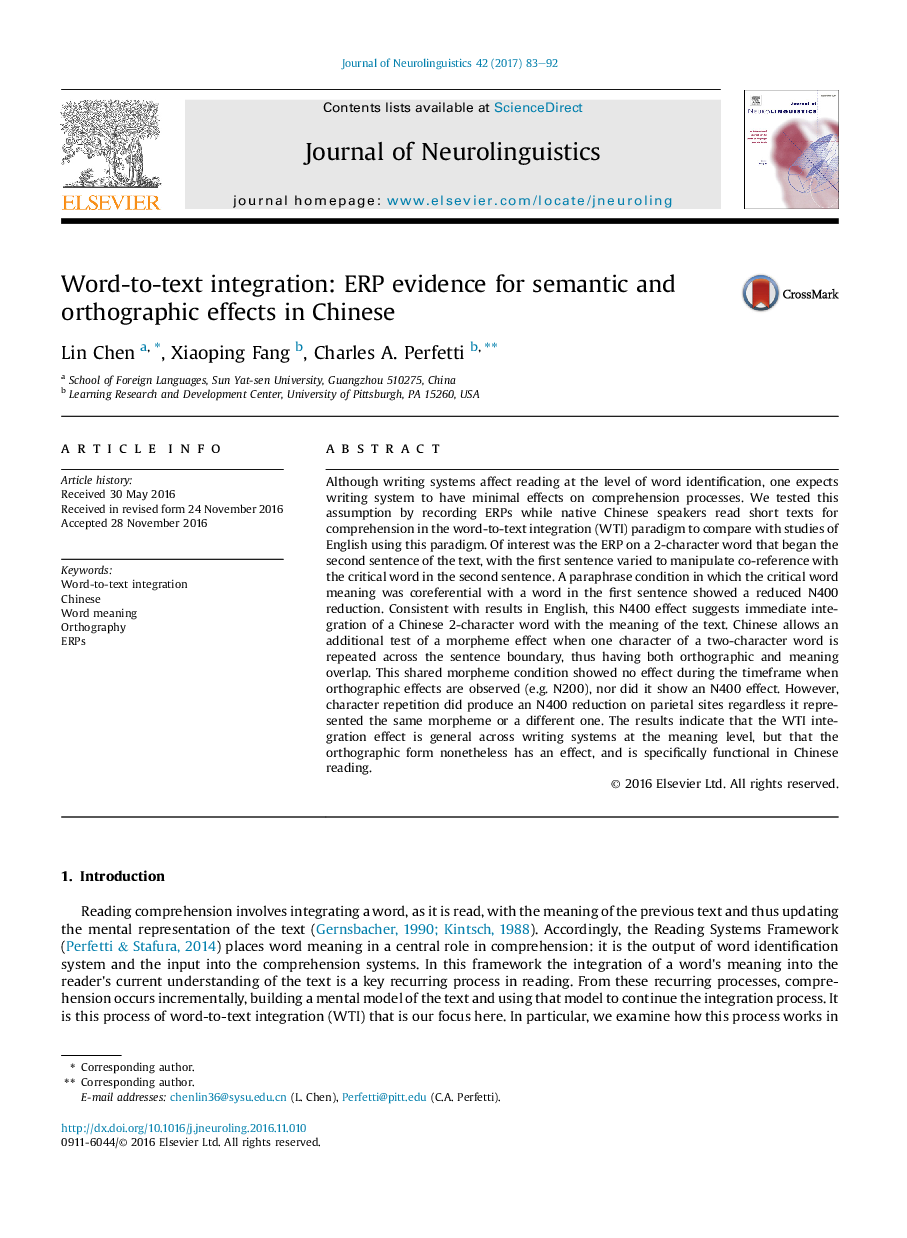| Article ID | Journal | Published Year | Pages | File Type |
|---|---|---|---|---|
| 5039224 | Journal of Neurolinguistics | 2017 | 10 Pages |
Abstract
Although writing systems affect reading at the level of word identification, one expects writing system to have minimal effects on comprehension processes. We tested this assumption by recording ERPs while native Chinese speakers read short texts for comprehension in the word-to-text integration (WTI) paradigm to compare with studies of English using this paradigm. Of interest was the ERP on a 2-character word that began the second sentence of the text, with the first sentence varied to manipulate co-reference with the critical word in the second sentence. A paraphrase condition in which the critical word meaning was coreferential with a word in the first sentence showed a reduced N400 reduction. Consistent with results in English, this N400 effect suggests immediate integration of a Chinese 2-character word with the meaning of the text. Chinese allows an additional test of a morpheme effect when one character of a two-character word is repeated across the sentence boundary, thus having both orthographic and meaning overlap. This shared morpheme condition showed no effect during the timeframe when orthographic effects are observed (e.g. N200), nor did it show an N400 effect. However, character repetition did produce an N400 reduction on parietal sites regardless it represented the same morpheme or a different one. The results indicate that the WTI integration effect is general across writing systems at the meaning level, but that the orthographic form nonetheless has an effect, and is specifically functional in Chinese reading.
Keywords
Related Topics
Life Sciences
Neuroscience
Cognitive Neuroscience
Authors
Lin Chen, Xiaoping Fang, Charles A. Perfetti,
